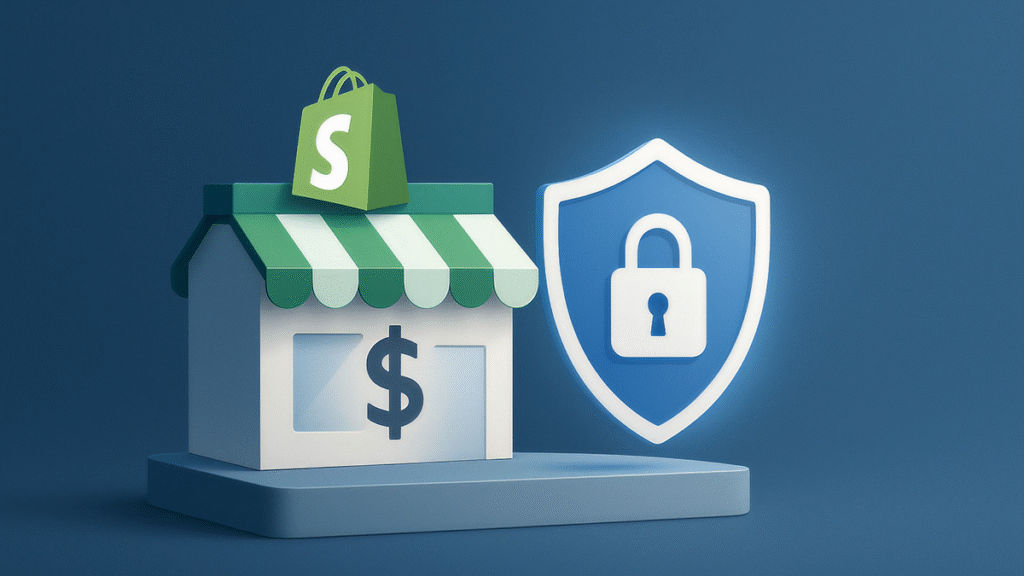Running a Shopify store is one of the fastest ways to build an e-commerce business. But as your store grows, so do the risks.
A data breach, lost shipment, or customer lawsuit can damage not just your finances but also your reputation. That’s where Shopify Insurance comes in. While Shopify provides the platform, insurance gives you the safety net to operate with confidence.
In this guide, we’ll break down the most important types of insurance for Shopify sellers, why they matter, and how to choose the right coverage to protect your store.
Why Shopify Insurance Matters
No matter if you’re running things on your own or sending out thousands of orders each day, every business faces real risks. One small product mistake could lead to an expensive claim. A cyberattack could put your customers’ information at risk. And a single warehouse fire could wipe out months of hard work overnight.
Insurance acts like a safety net when unexpected problems come up. It protects your money and also helps protect your good name. Shoppers trust businesses that show they’re responsible, and having the right insurance is a simple way to prove your professionalism.
More importantly, insurance keeps your business steady. Instead of paying for unexpected losses yourself, it helps you stay on track and keep things running, even when challenges come up.
Key Types of Shopify Insurance
Understanding which policies matter most is the first step in building a secure e-commerce foundation.
Here are the primary coverages Shopify merchants should consider:
- General Liability & Product Liability: Protects against lawsuits when your products or operations cause injury or damage. This is crucial if you sell items that could be considered high-risk, such as children’s products, electronics, or consumables.
- Cyber Liability & Data Breach Insurance: Covers the costs of responding to a cyberattack or data breach, including legal fees, customer notifications, and even credit monitoring. With hackers targeting small businesses more than ever, this protection is essential.
- Shipping Insurance: Helps cover lost, stolen, or damaged orders during delivery. Shopify’s built-in shipping insurance provides protection for certain labels, but higher-value orders often require additional coverage.
- Property & Inventory Insurance: Safeguards your physical stock, warehouse contents, and equipment against theft, fire, or natural disasters.
- Business Interruption Coverage: Compensates you for lost income if operations are disrupted—whether due to a fire, supply chain issue, or major cyber outage.
- Workers’ Compensation & Specialized Policies: If you employ staff, workers’ comp is legally required in most states. Specialized options like umbrella policies or product recall insurance offer extra protection depending on your business model.
How to Evaluate the Right Coverage
Choosing the right policies requires more than just picking from a menu. Each Shopify store has a unique risk profile, and understanding yours is key.
Understand Your Product Risks
The first step in choosing Shopify Insurance is assessing the type of products you sell. Items like electronics, food, or children’s goods carry higher safety risks and therefore demand more robust liability coverage. If your products are imported or sourced from overseas, this can add another layer of complexity and increase your exposure.
Examine Your Digital Footprint
Next, consider the customer data your Shopify store collects and stores. If you process payments directly, hold sensitive customer details, or serve international markets, cyber and shipping insurance should rank high on your list. The more sensitive your digital operations, the greater the need for specialized coverage.
Factor in Your Business Scale
Coverage needs shift dramatically depending on the size of your store. A small merchant handling 50 orders a week faces far fewer risks than a larger operation fulfilling thousands. Employee headcount, warehouse size, and the number of markets you serve all influence how much protection you should carry.
Review Policy Exclusions Carefully
Finally, don’t overlook the fine print. Many insurance policies exclude specific risks unless you add them as riders. For instance, some cyber liability plans don’t cover ransomware attacks unless purchased separately. Comparing multiple providers and reading exclusions in detail ensures you won’t be blindsided when you need coverage most.
Best Practices for Maximizing Shopify Insurance
Once you’ve secured coverage, the next step is making sure your policies truly support your business growth.
Two strategies are especially effective:
- Bundling Policies: Many insurers offer a Business Owner’s Policy (BOP), which combines general liability, property, and business interruption into one package. This often lowers costs while simplifying administration.
- Leveraging Shopify’s Tools: Shopify’s shipping insurance (available on certain labels) offers an accessible way to protect orders. Using these built-in protections is a great first step, but higher-value shipments may require supplemental coverage.
- Enhancing Cybersecurity Practices: Strong cybersecurity reduces both the likelihood of an incident and your premiums. Implement measures like two-factor authentication, encrypted payment gateways, and regular software updates to demonstrate you’re a lower-risk merchant.
- Documenting Everything: Keep records of product testing, customer communications, and shipping receipts. These not only prevent issues but also make claims easier to resolve.
- Revisiting Coverage Annually: As your Shopify store grows, so do your risks. Review your insurance annually to adjust coverage limits and add new policies as needed.
Common Pitfalls to Avoid
Even with insurance in place, Shopify merchants sometimes run into avoidable mistakes. The most common pitfalls include:
- Underestimating coverage needs: Opting for the cheapest plan often leaves you exposed when major claims arise.
- Ignoring policy exclusions: Failing to read fine print can mean discovering gaps in coverage when it’s already too late.
- Failing to update policies: Businesses evolve, but insurance doesn’t update automatically. A new product line or international market entry may require new coverage.
- Overlooking customer communication: Insurance is powerful, but your customers need reassurance, too. Highlighting insured shipping or your commitment to security can boost conversion rates.
Avoiding these missteps ensures your insurance strategy remains a reliable asset rather than a false sense of security.
Bottomline
E-commerce success depends on more than sales and marketing—it requires resilience. Shopify Insurance provides that resilience by protecting against product liability, cyberattacks, shipping losses, and unexpected disruptions.
For merchants, the right coverage means peace of mind, smoother operations, and stronger customer trust.
By carefully selecting policies, evaluating your risks, and integrating best practices, you can transform insurance from a back-office requirement into a driver of customer confidence and long-term growt
In the fast-moving digital marketplace, Shopify Insurance isn’t just an option—it’s an essential part of building a secure and scalable e-commerce business.



 Swipe Team
Swipe Team September 25, 2025
September 25, 2025 6 mins
6 mins 



